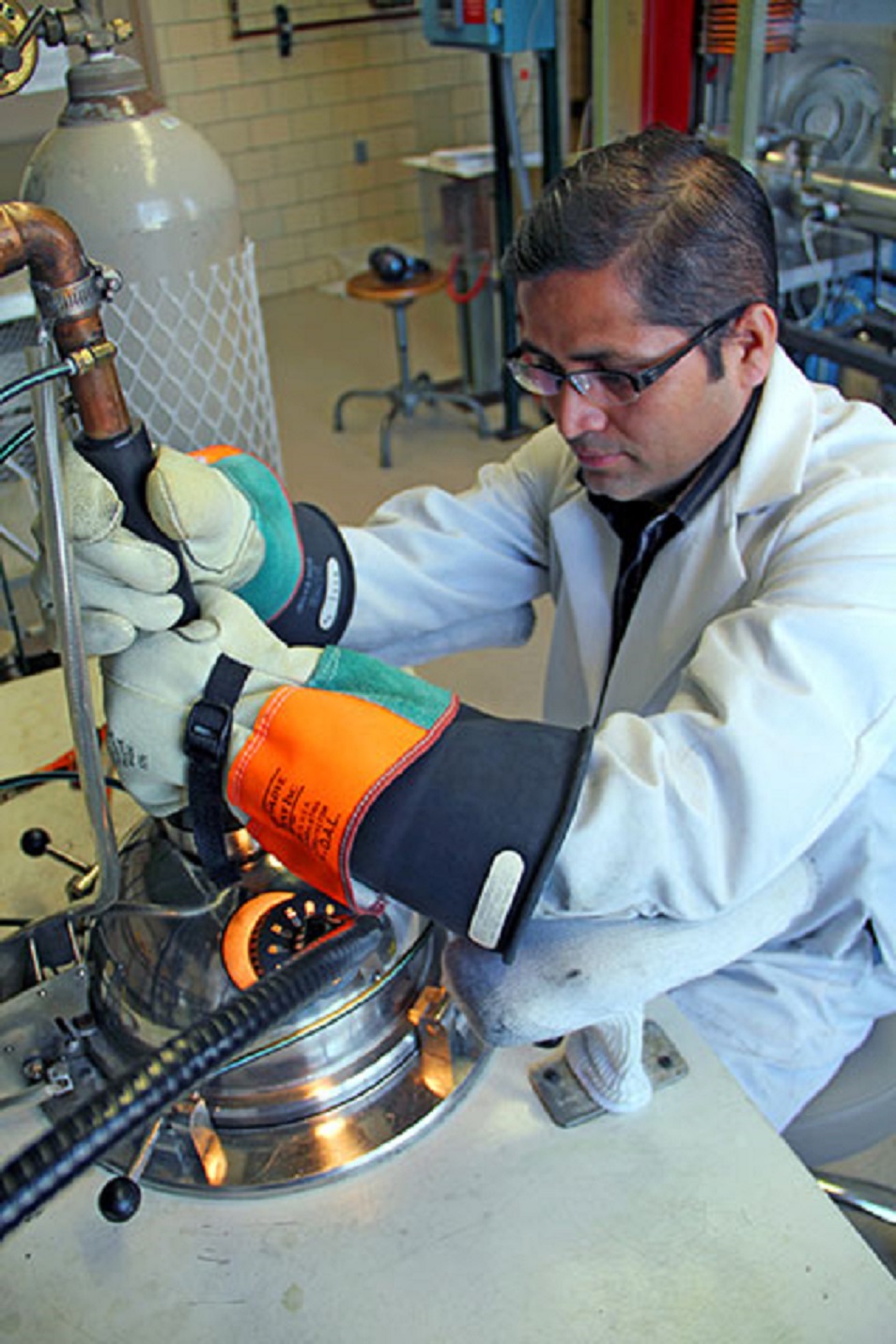Scientists at the U.S. Department of Energy’s Ames Laboratory have created a new magnetic alloy that could be an alternative to traditional rare-earth permanent magnets.
The new alloy could potentially replace high-performance permanent magnets found in automobile engines and wind turbines.
Instead of using one of the scarcest and costliest rare earth elements, dysprosium, it uses cerium, the most abundant rare earth.
The result, an alloy of neodymium, iron and boron co-doped with cerium and cobalt, is a less expensive material with properties that are competitive with traditional sintered magnets containing dysprosium, the scientists say.
Experiments performed at Ames Laboratory by post-doctoral researcher Arjun Pathak demonstrated that the ability of the alloy to resist demagnetization exceeds that of dysprosium-containing magnets at high temperatures. The materials are also at least 20 to 40% cheaper than the dysprosium-containing magnets.

Magnetic properties
‘We found that this material works better than anything out there at temperatures above 150°C,’ said Karl A. Gschneidner, who led the research. ‘It’s an important consideration for high-temperature applications.’
Previous attempts to use cerium in rare-earth magnets failed because it reduces the Curie temperature – the temperature above which an alloy loses its permanent magnet properties. But the research team discovered that co-doping with cobalt allowed them to substitute cerium for dysprosium without losing desired magnetic properties.
The paper, ‘Cerium: An Unlikely Replacement of Dysprosium in High Performance Nd-Fe-B Permanent Magnets’ was published in Advanced Materials.
This story is reprinted from material from Ames Laboratory, with editorial changes made by Materials Today. The views expressed in this article do not necessarily represent those of Elsevier.



